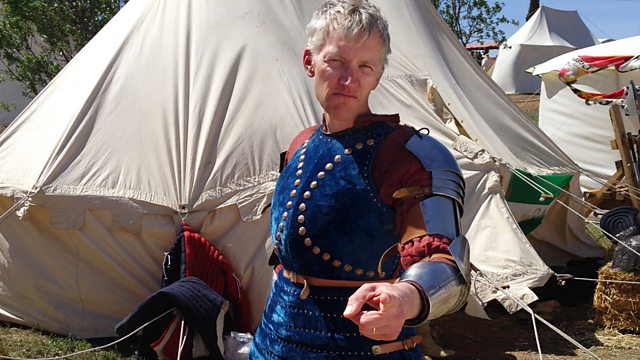The Stonehenge Tunnel
Helen Castor hears why archaeologists do not want a dig at Stonehenge, and Tom Holland meets the 19th-century pioneer of China's Belt and Road.
Tom Holland goes behind the headlines to look at the stories making history.
Helen Castor travels to Salisbury Plain to hear more about a growing row between archaeologists and our leading heritage organisations about plans to build a tunnel under Stonehenge. She discovers how, increasingly, it isn't iconic Stonehenge that is at the centre of researchers' thinking but the wider and even more historic landscape.
In Lincolnshire, Carenza Lewis and a team from the University of Lincoln are using archaeology for what some might describe as more pressing questions - how we can tackle the housing crisis and provide green space and places to play. A community project in Gainsborough has been evaluating the success of the 20th Century Garden City Movement by analysing artefacts from a post-war housing estate, to see if people actually exploited the space provided by urban planners.
Chinese President Xi Jinping's Belt and Road initiative is a multi-billion dollar infrastructure project that looks set to transform large swaths of Asia and the world beyond. But, as Tom Holland discovers from Silk Road historian Peter Frankopan, British explorers were eying up the economic possibilities of the isolated frontier near Pakistan, Afghanistan and Tajikistan more than 150 years ago.
Producer: Nick Patrick
A Pier production for 主播大秀 Radio 4.
Last on
More episodes
Previous
Next
Guests
The Stonehenge Tunnel
Plans to put the A303 in a tunnel under the Stonehenge landscape have prompted much debate since they were first discussed in the 1980鈥檚. At that time, many archaeologists thought that this was a great solution to rid this important pre-historic site of the traffic jams that continue to impact on people鈥檚 experience of such a special place. But, in those days, it was the stones at Stonehenge that were the focus of research. Today, archaeologists are just as interested in the 26 square miles that make up the World Heritage Site and the connections between all of the features in it. It's for this reason, that many archaeologists are now concerned about plans put forward for a 2.9km tunnel because they think that the entrances to it will intrude on the landscape and, perhaps, destroy some internationally important sites.
听
Helen Castor went to Stonehenge to talk to Dr Rachel Pope from the University of Liverpool, who represents the views of archaeologists opposing plans for a tunnel. They were joined by the Chief Executive of Historic England, Duncan Wilson OBE and the National Trust鈥檚 Dr Nick Snashall. Both organisations have some concerns about the plans but they are not against it in principal.
听
听
听
听
听
William Stukeley
The idea that Stonehenge is part of a larger, ritual landscape (the idea that modern archaeologists now support) was first articulated by the antiquarian and, some argue, father of archaeology William Stukeley. Ron Iliffe and David Haycock discuss how he came to this conclusion 200 years ago.
听
听
听
听
听
听
听
James Petiver
Dr Anna Marie Roos at the University of Lincoln has unearthed a diary written by an apothecary whose collection of plants became an integral part of first the British Museum and then the Natural History Museum. James Petiver was a networker par excellence. He corresponded with people all over the world and travelled around Britain carrying out rudimentary fieldwork. As an apothecary in an age when plants were the basis of most medical treatments, his thirst for knowledge was practical as well as intellectual. His diary is a small window on the late seventeenth century world; a world in which great minds were at the very beginnings of a journey into what we know as science today.
听
For Making History, Verity Sharp went to the Royal Society in London to meet Anna Marie Roos and the society鈥檚 Librarian Keith Moore.
听
听
听
听
Sherwood Forest and Thynghowe

Thynghowe is probably the best preserved Viking assembly site in the UK. But only now with Geophysics and LIDAR technology are archaeologists really able to understand just how impressive a site it is. Andy Gaunt is Director of Mercian Archaeology which has been involved for some years with a community history and archaeology project in Sherwood Forest and he spoke to Tom Holland about this site whilst standing on top of it.
听
听
听
Broadcast
- Tue 20 Jun 2017 15:30主播大秀 Radio 4
Podcast
-
![]()
Making History
Popular history series where the past connects with the present.


